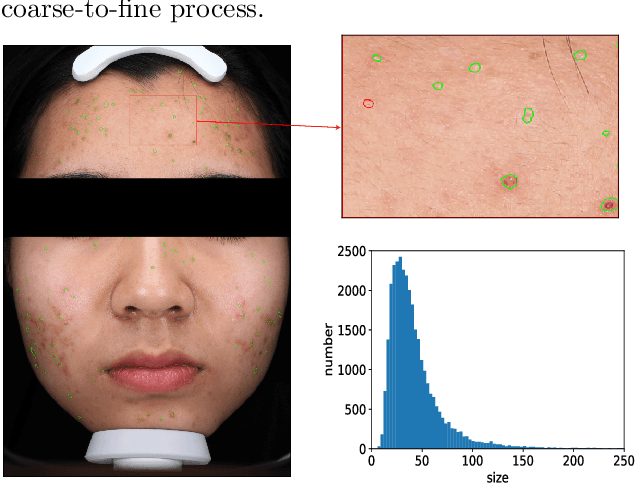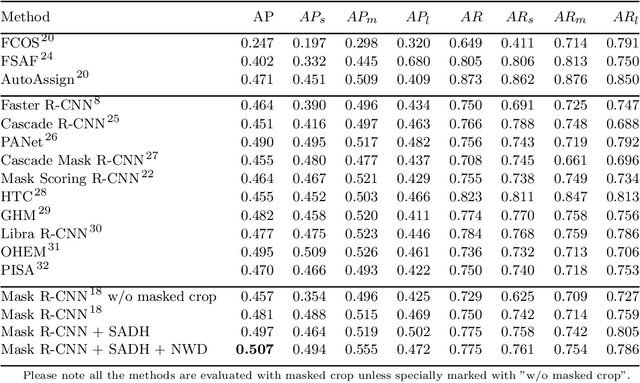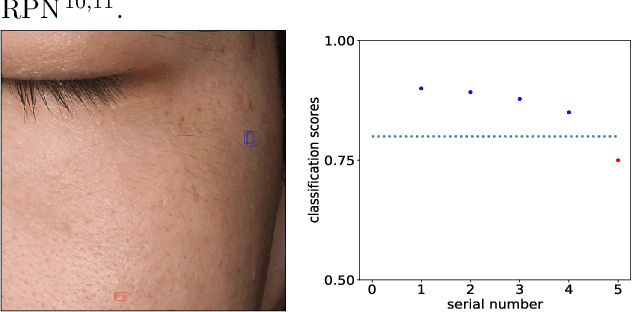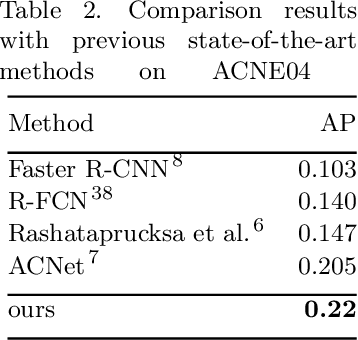Xian Jiang
Towards Accurate Acne Detection via Decoupled Sequential Detection Head
Jan 28, 2023Abstract:Accurate acne detection plays a crucial role in acquiring precise diagnosis and conducting proper therapy. However, the ambiguous boundaries and arbitrary dimensions of acne lesions severely limit the performance of existing methods. In this paper, we address these challenges via a novel Decoupled Sequential Detection Head (DSDH), which can be easily adopted by mainstream two-stage detectors. DSDH brings two simple but effective improvements to acne detection. Firstly, the offset and scaling tasks are explicitly introduced, and their incompatibility is settled by our task-decouple mechanism, which improves the capability of predicting the location and size of acne lesions. Second, we propose the task-sequence mechanism, and execute offset and scaling sequentially to gain a more comprehensive insight into the dimensions of acne lesions. In addition, we build a high-quality acne detection dataset named ACNE-DET to verify the effectiveness of DSDH. Experiments on ACNE-DET and the public benchmark ACNE04 show that our method outperforms the state-of-the-art methods by significant margins. Our code and dataset are publicly available at (temporarily anonymous).
Learning High-quality Proposals for Acne Detection
Jul 08, 2022



Abstract:Acne detection is crucial for interpretative diagnosis and precise treatment of skin disease. The arbitrary boundary and small size of acne lesions lead to a significant number of poor-quality proposals in two-stage detection. In this paper, we propose a novel head structure for Region Proposal Network to improve the proposals' quality in two ways. At first, a Spatial Aware Double Head(SADH) structure is proposed to disentangle the representation learning for classification and localization from two different spatial perspectives. The proposed SADH ensures a steeper classification confidence gradient and suppresses the proposals having low intersection-over-union(IoU) with the matched ground truth. Then, we propose a Normalized Wasserstein Distance prediction branch to improve the correlation between the proposals' classification scores and IoUs. In addition, to facilitate further research on acne detection, we construct a new dataset named AcneSCU, with high-resolution imageries, precise annotations, and fine-grained lesion categories. Extensive experiments are conducted on both AcneSCU and the public dataset ACNE04, and the results demonstrate the proposed method could improve the proposals' quality, consistently outperforming state-of-the-art approaches. Code and the collected dataset are available in https://github.com/pingguokiller/acnedetection.
 Add to Chrome
Add to Chrome Add to Firefox
Add to Firefox Add to Edge
Add to Edge